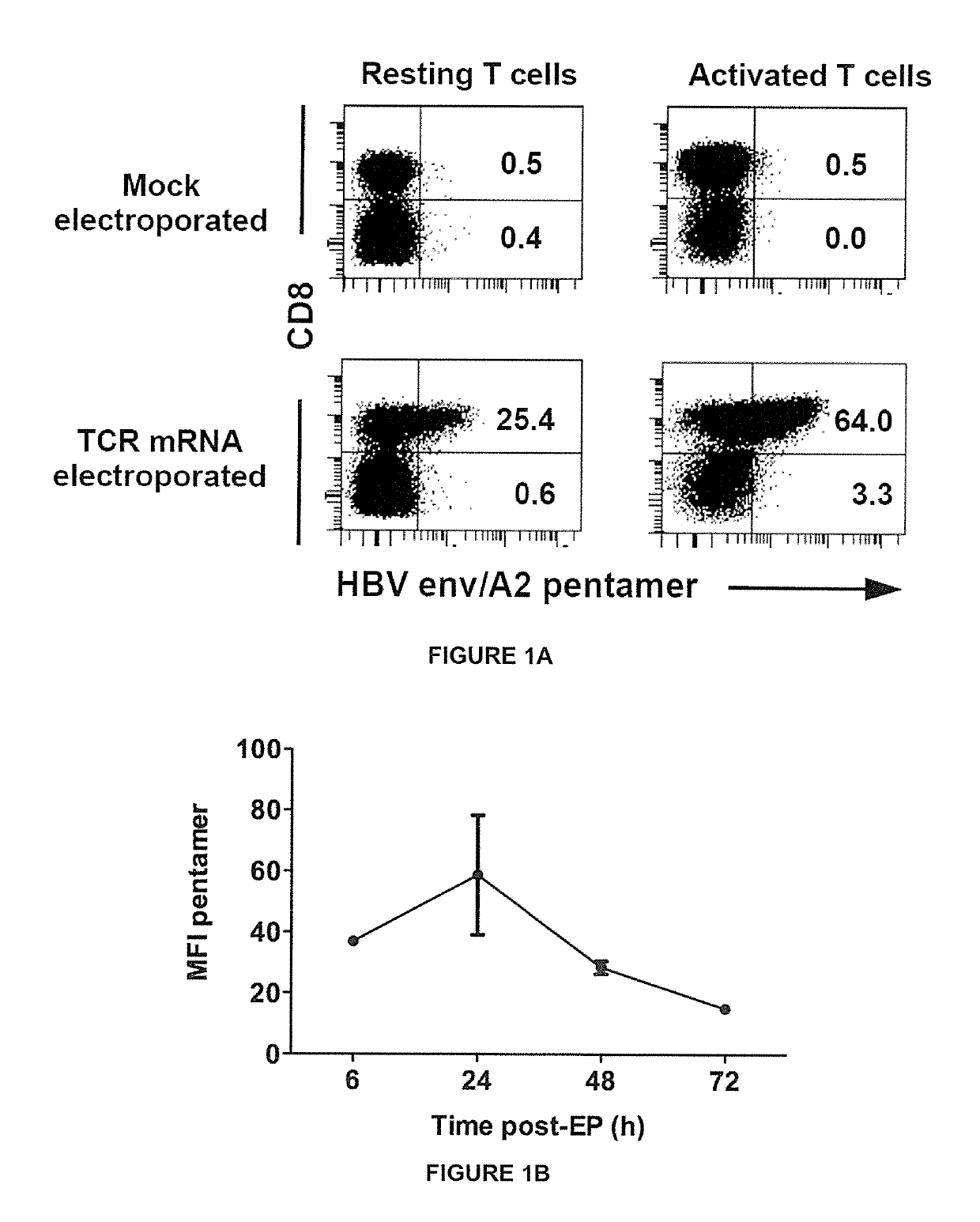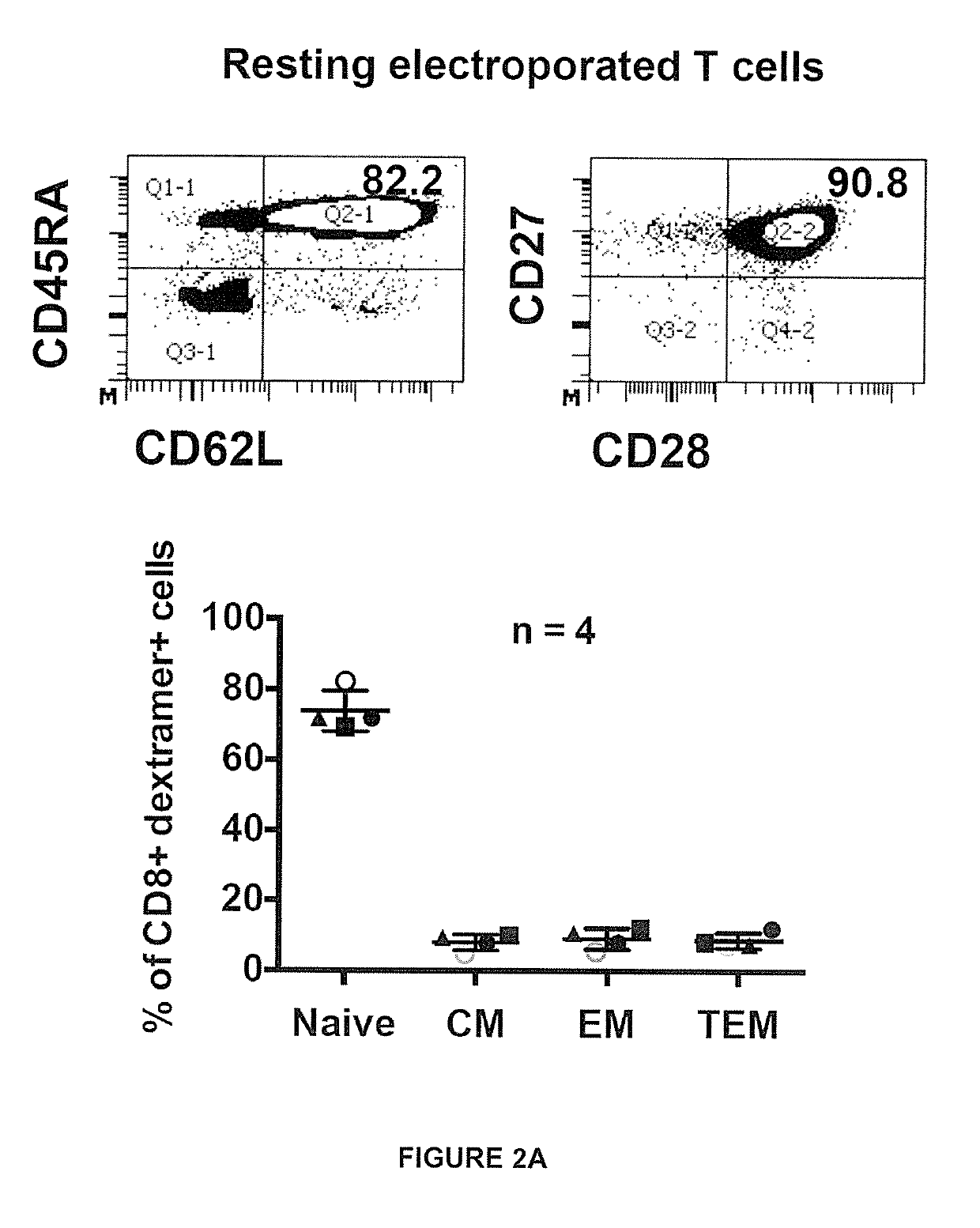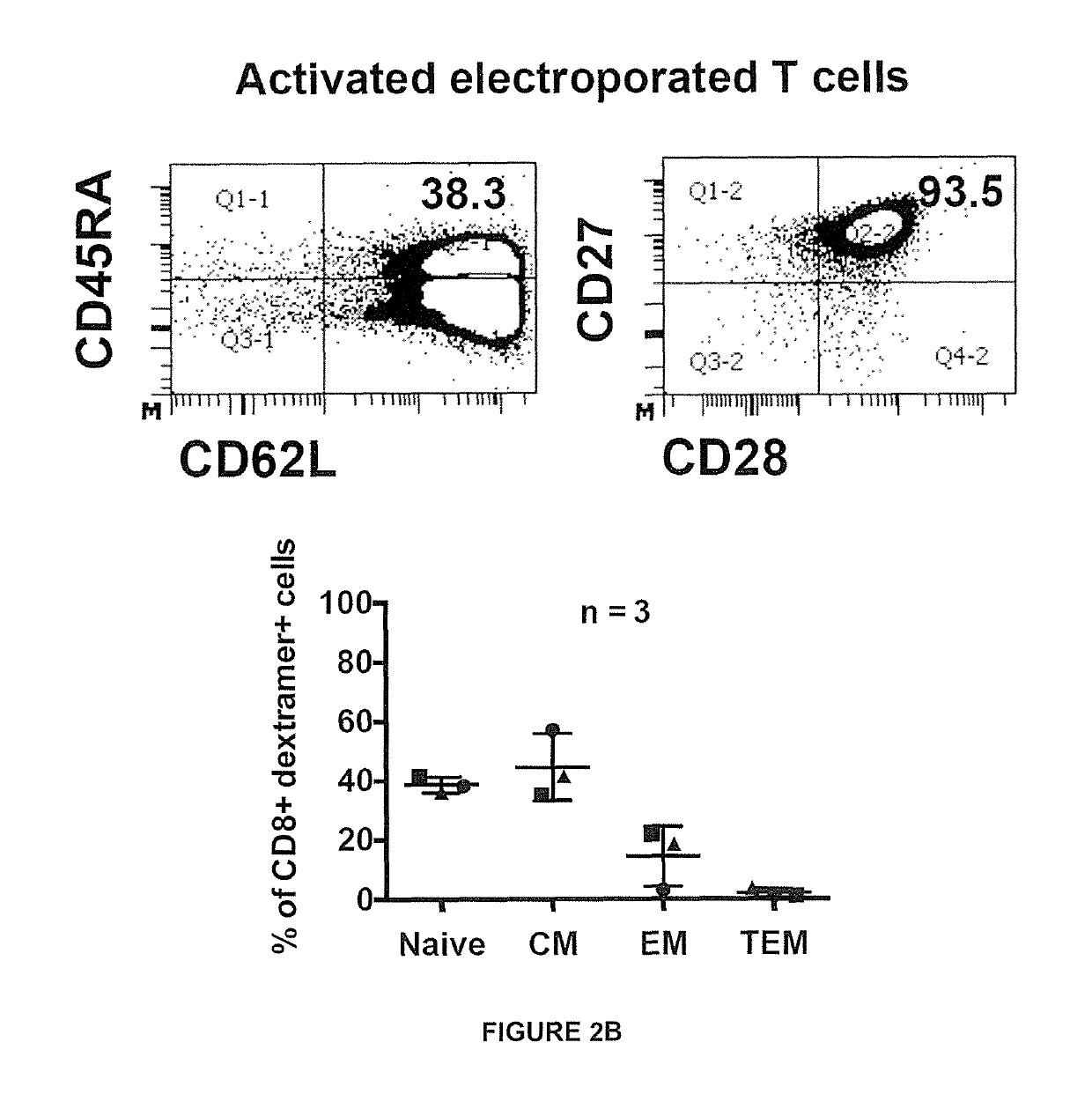Non-activated t cells expressing exogenous virus-specific t cell receptor (TCR)
a t cell receptor and exogenous virus technology, applied in the field of t cells, can solve the problems of inability to eliminate hbv cccdna from infected hepatocytes, require life-long treatment, and high cost of standard therapeutic strategies, and achieve the effect of reducing toxicity to the host and substantial cytotoxicity
- Summary
- Abstract
- Description
- Claims
- Application Information
AI Technical Summary
Benefits of technology
Problems solved by technology
Method used
Image
Examples
example 1
s
[0238]HepG2-Env and HepG2-Core expressing luciferase cell lines were cultured in RPMI 1640 supplemented with 10% heat-inactivated fetal bovine serum (FBS), 20 mM HEPES. 0.5 mM sodium pyruvate, 100 U / ml penicillin, 100 μg / ml streptomycin, MeM amino acids, Glutamax, MeM nonessential amino acids, (Invitrogen, Carlsbad, Calif.), and 2 μg / ml puromycin (BD Biosciences, San Jose, Calif.) was added to maintain selection. T2 cells were cultured in RPMI 1640 supplemented as described above. HepG2 cells that stably expressed the entire HBV genome and produced infectious virus (HepG2.2.15) were cultured in DMEM supplemented with 10% heat-inactivated FBS. 20 mM HEPES. 0.5 mM sodium pyruvate, and 150 μg / ml G418 (Sigma-Aldrich, St. Louis, Mo.). HepG2 cells that stably expressed human sodium taurocholate co-transporting polypeptide (hNTCP) were cultured in DMEM supplemented with 10% heat-inactivated FBS. Glutamax, 100 U / ml penicillin, 100 μg / ml streptomycin, and 5 μg / ml puromycin was added to main...
example 2
[0239]Peripheral blood mononuclear cells (PBMC) were collected under informed consent from healthy donors. To produce activated T cells, PBMC were stimulated with 600 IU / ml interleukin-2 (rlL-2; R&D Systems) and 50 ng / ml anti-CD3 (OKT-3; eBioscience, San Diego, Calif.) in AIM-V+2% human AB serum for 8 days, and rlL-2 was increased to 1000 IU / ml one day before electroporation. Non-activated (resting) T cells were isolated using the pan T cell isolation kit (Miltenyi Biotec, GmbH, Germany) and cultured overnight in 100 IU / ml rlL-2 before electroporation.
example 3
metry
[0240]Antibodies for cell surface staining were obtained from BD Biosciences (anti-human CD8-PE-Cy7, CD8-V500, CD45RA-APC, CD62L-PECy7), eBioscience (anti-human CD45RO-eFluor650), Immudex and Proimmune (HLA-A201-HBs183-91-PE dextramer or pentamer), and R&D Systems (human LTβ receptor-Fc chimera). Antibodies for intracellular cytokine staining were obtained from BD Biosciences (anti-human IFN-γ-APC, TNF-α-Alexa488, IL-2-PE, Granzyme-APC) and Diaclone (anti-human perforin-FITC). Intracellular cytokine staining was performed by fixing and permeabilizing cells with cytofix / cytoperm (BD Biosciences). Flow cytometry was performed using a FACS Canto flow cytometer or LSRII (BD Biosciences) and data was analyzed with FACS Diva program (BD Biosciences).
PUM
| Property | Measurement | Unit |
|---|---|---|
| pH | aaaaa | aaaaa |
| artus HBV RG | aaaaa | aaaaa |
| affinity | aaaaa | aaaaa |
Abstract
Description
Claims
Application Information
 Login to View More
Login to View More - R&D
- Intellectual Property
- Life Sciences
- Materials
- Tech Scout
- Unparalleled Data Quality
- Higher Quality Content
- 60% Fewer Hallucinations
Browse by: Latest US Patents, China's latest patents, Technical Efficacy Thesaurus, Application Domain, Technology Topic, Popular Technical Reports.
© 2025 PatSnap. All rights reserved.Legal|Privacy policy|Modern Slavery Act Transparency Statement|Sitemap|About US| Contact US: help@patsnap.com



